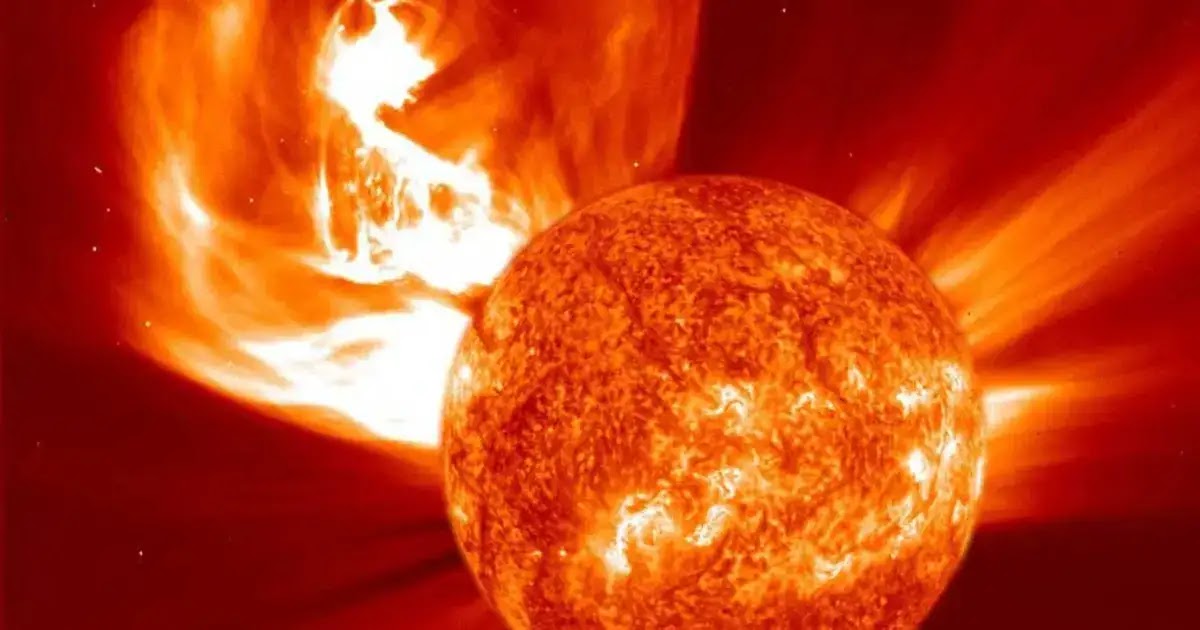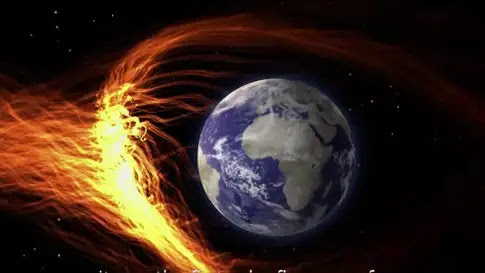Coronal mass ejections (CMEs) are large eruptions of plasma and magnetic field from the Sun's corona.
They are often associated with solar flares and can disrupt the Earth's magnetic field, causing geomagnetic storms.
CMEs are a major source of space weather and can be hazardous to astronauts and equipment in space.
Coronal mass ejections (CMEs) are giant clouds of plasma that are ejected from the Sun's corona.
These clouds can contain up to 10 billion tons of material and can travel at speeds of up to 3,000 km/s.
When a CME collides with the Earth's magnetosphere, it can cause a geomagnetic storm, which can disrupt power grids, communications systems, and navigation systems.
CMEs are often associated with solar flares, but they can also occur without any accompanying flares.
What causes CMEs?
Coronal mass ejections (CMEs) are among the most powerful eruptions in the solar system. They are huge clouds of plasma and magnetic field that are ejected from the Sun's corona, often during solar flares.
CMEs can cause widespread disruption to terrestrial systems, including power grids and communications networks.
Coronal mass ejections (CMEs) are one of the most energetic events in the solar system.
These massive eruptions of plasma and magnetic field from the Sun's surface can release as much as 10 billion megatons of energy.
CMEs are often associated with solar flares, but they can also occur without any accompanying flare activity.
The exact cause of CMEs is still not fully understood, but they are thought to be the result of the release of magnetic energy that has built up in the Sun's atmosphere.
This can happen when the Sun's magnetic field becomes tangled and unstable, and can also be triggered by the impact of high-speed solar wind particles on the Sun's surface.
Whatever the cause, the result is a massive release of energy that can send billions of tons of plasma and magnetic field into space.
CMEs can have a major impact on the Earth, depending on their size, speed, and direction.
If a CME is directed towards the Earth, it can interact with our planet's magnetic field and cause a geomagnetic storm.
These storms can disrupt communication systems, cause power outages, and even damage satellites.
Luckily, we can usually predict when a CME is going to hit the Earth, and so we can take steps to minimize the impact.
Geomagnetic storms
Geomagnetic storms are temporary disturbances in Earth's magnetosphere, created by the interaction of solar wind and Earth's magnetic fields.
These storms most often occur when solar activity is at its highest. The solar wind is a stream of plasma coming from the sun. It is not a constant wind, but rather changes in strength and direction.
The solar wind consists of electrons, protons and alpha particles. The Earth's magnetic field is the shape of a donut, with the Earth in the center.
The outer part of the donut is filled with radiation, called the Van Allen Belt. This radiation extends from about 10 Earth radii to over 60 Earth radii. It is here that the geomagnetic storms typically occur.
Geomagnetic storms are caused when the Earth's magnetic field interacts with the sun's magnetic field.
This happens because the Earth's magnetic field is not aligned with the Earth's spin axis, so the solar winds drag it around.
This causes the geomagnetic field to become distorted, which causes a lot of electrons to flow along the outside of the Earth.
This disturbance in the magnetic field causes a geomagnetic storm, which means that radiation from solar flares can reach the Earth during a storm.
The Carrington Event
The Carrington Event was a massive solar storm that hit Earth in 1859. The Carrington Event was the largest solar storm in recorded history, and it had a profound impact on the world.
The storm caused widespread damage to infrastructure and disrupted communication systems.
It also sparked a wave of new research into the effects of solar storms on the Earth.
The Carrington Event was a solar storm that caused electric currents to flow in telegraph lines, setting some telegraph offices on fire and disrupting the operation of the telegraph system all over the world.
It was the largest solar storm observed during modern times. The Carrington Event was so powerful that the telegraph lines received direct currents of hundreds of amperes.
This caused havoc with the telegraph system and set telegraph offices on fire. It resulted in the disruption of the telegraph system world-wide.
Telegraph pylons threw sparks and telegraph paper spontaneously caught fire. The operator could smell the burning insulation as the pylons were arcing themselves.
The most amazing aspect of solar storms is that they can affect the Earth even if they occur at the other side of the sun.
This is because light and radiation travel faster than the speed of sound or other electromagnetic waves.
CMEs Vs. Technology
As we know CMEs are not life threatening but when it comes to technology its very disturbing.
When CME clouds reach Earth, the Earth's strong magnetic field attracts the cloud and funnels it into the upper atmosphere.
There, the plasma cloud can damage satellites and power grids. These effects can be especially damaging for astronauts in space.
If a coronal mass ejection were to occur when astronauts on the International Space Station were outside, they might have little warning to get back inside before the cloud hits.
Consequences could include a loss of communication, a power failure, or the necessity to wear a spacesuit if exposed to the plasma cloud.
Can CMEs be predicted?
The location of CMEs, and of course the flare activity, is unpredictable in the long run. However, the Sun can be understood well enough to predict the general occurrence of CMEs.
The source of most CMEs is sunspot group 5302. We know this because the frequency of CMEs is about twice as high in this active region compared to the rest of the Sun.
Two important features of a sunspot are temperature and magnetic fields. Sunspots are regions of lower temperatures than the surrounding area.
Lower temperatures on the Sun means darker regions. The Sun's magnetic field is stronger in sunspots and can be measured by the Zeeman effect.
More importantly, we now know that sunspots are caused by the magnetic fields of the Sun. The above is an excerpt from the book, "Introductory Space Physics" by Raymond L. Lee, Jr.
In his book, the author describes the solar magnetic fields, solar flares, and coronal mass ejections.



